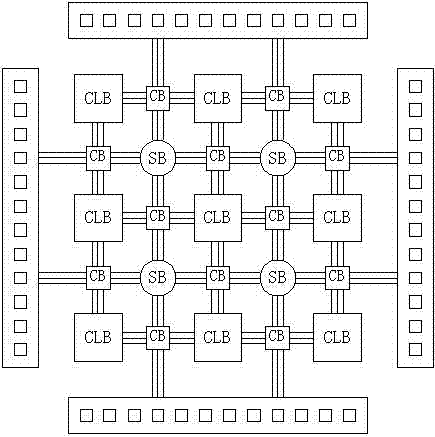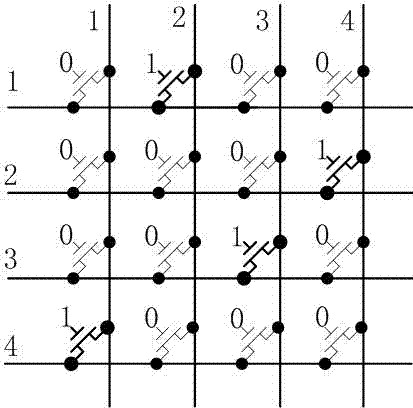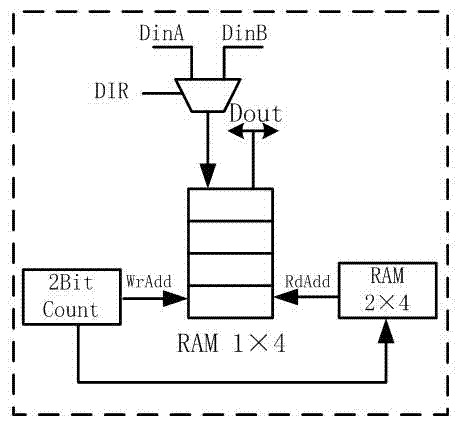FPGA (field-programmable gate array) interconnection structure supporting time division switching
A technology of time-division switching and interconnection structure, applied in the FPGA field, can solve problems such as difficult implementation, slow logic circuit performance, increased chip area and power consumption, etc., to solve scalability problems, solve signal stability, and reduce design complexity sexual effect
- Summary
- Abstract
- Description
- Claims
- Application Information
AI Technical Summary
Problems solved by technology
Method used
Image
Examples
Embodiment Construction
[0059] The solutions of the present invention will be further described below in conjunction with the accompanying drawings and specific embodiments.
[0060] In order to make the traditional FPGA structure support time-division switching, several major changes need to be made to the existing traditional FPGA structure:
[0061] Traditional FPGA interconnection resources are composed of CB and SB, in which the horizontal and vertical wiring channels are connected through the switch box SB, and the input and output of CLB are connected with each wiring channel through the connection box CB. Both CB and SB in the traditional FPGA structure adopt a space switching structure, and the control switches are composed of transmission tubes or MUX (multiplexer) composed of transmission tubes, such as Figure 8 shown.
[0062] The invention converts the interconnected parallel signals in the FPGA into serial signals, which can reduce the quantity and area of interconnected resources i...
PUM
 Login to View More
Login to View More Abstract
Description
Claims
Application Information
 Login to View More
Login to View More - R&D
- Intellectual Property
- Life Sciences
- Materials
- Tech Scout
- Unparalleled Data Quality
- Higher Quality Content
- 60% Fewer Hallucinations
Browse by: Latest US Patents, China's latest patents, Technical Efficacy Thesaurus, Application Domain, Technology Topic, Popular Technical Reports.
© 2025 PatSnap. All rights reserved.Legal|Privacy policy|Modern Slavery Act Transparency Statement|Sitemap|About US| Contact US: help@patsnap.com



